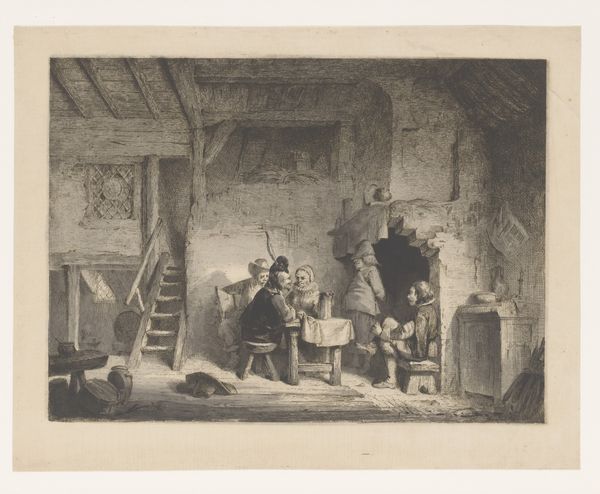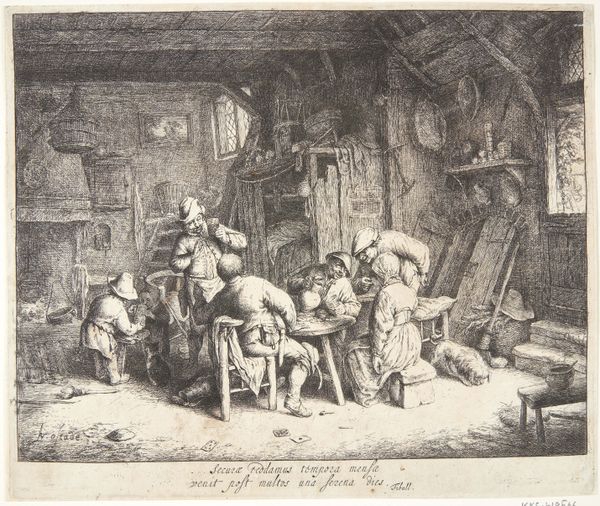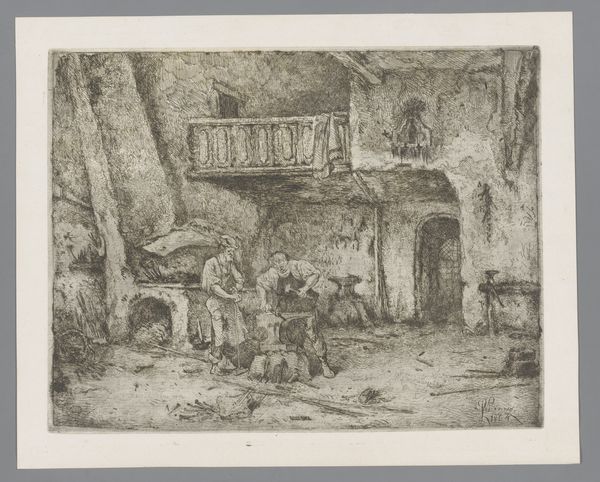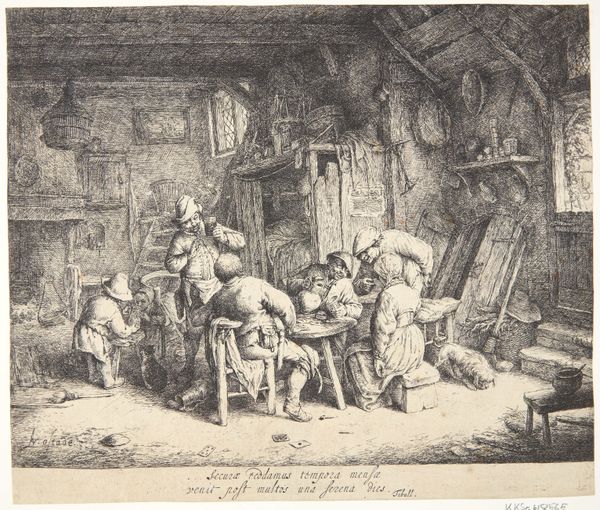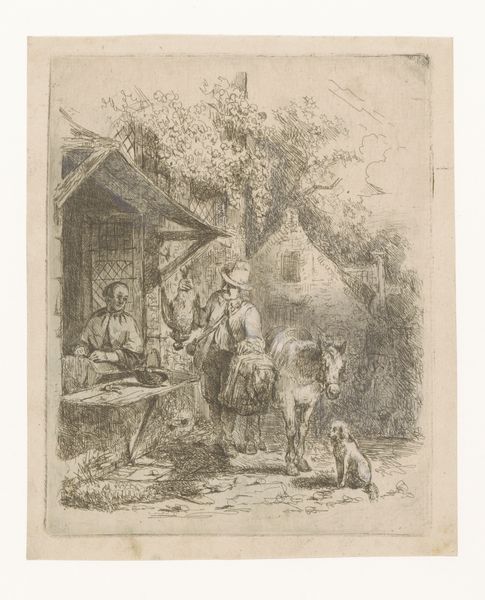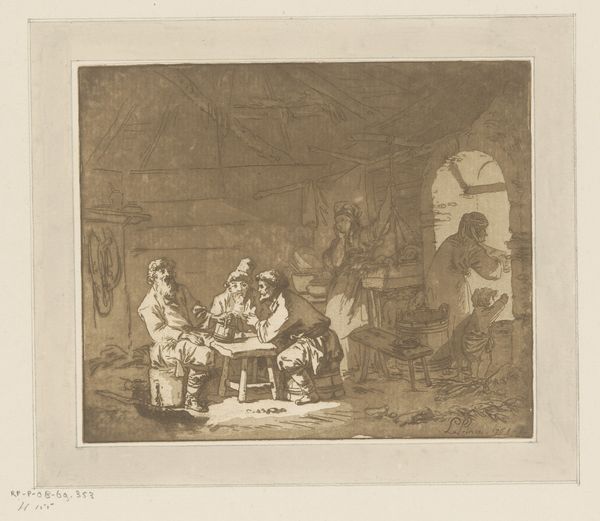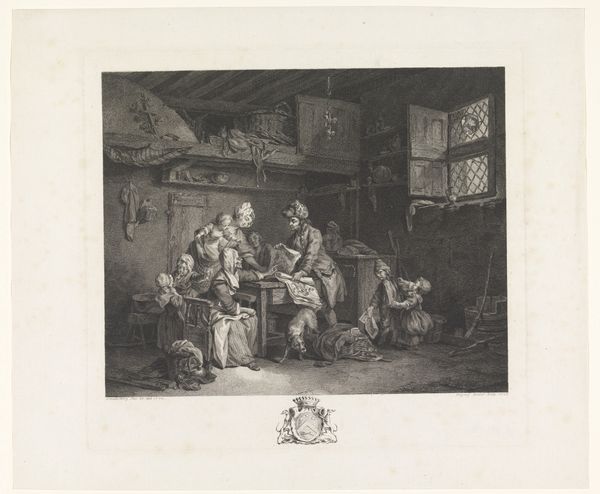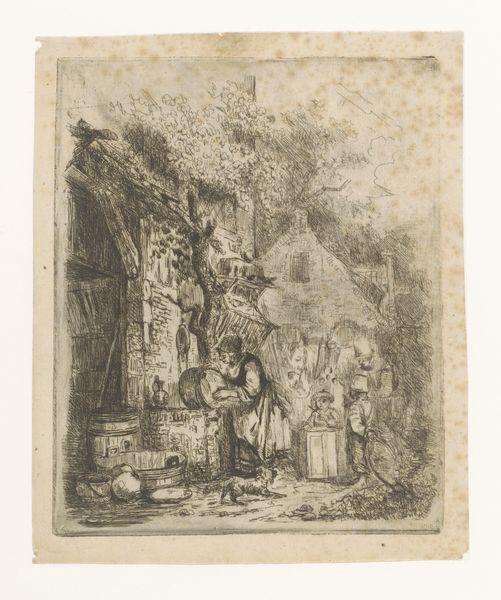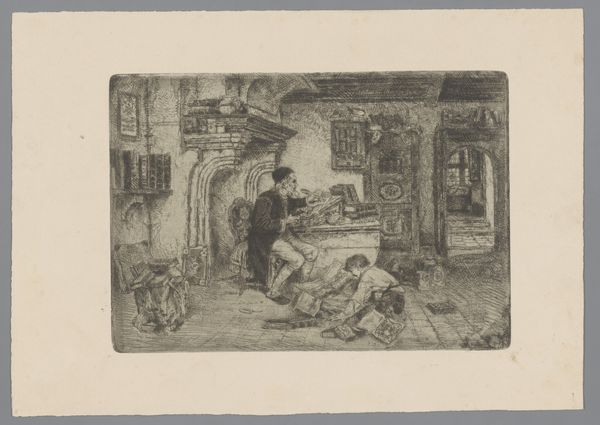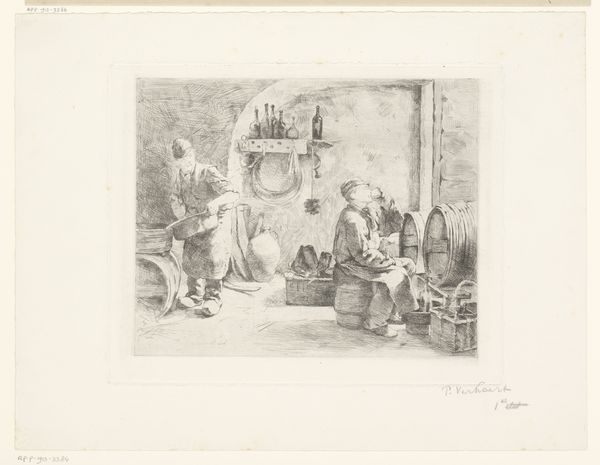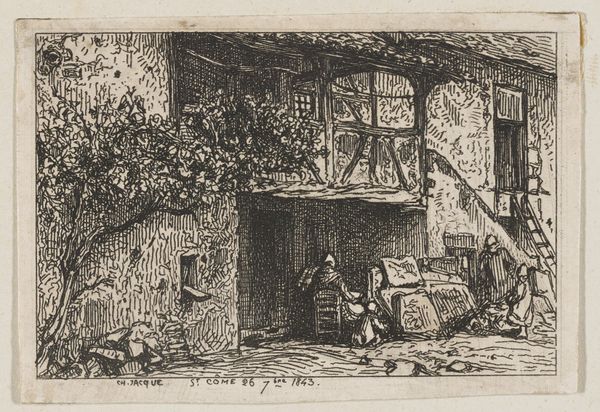
drawing, print, engraving
#
portrait
#
drawing
# print
#
pencil drawing
#
genre-painting
#
history-painting
#
engraving
Dimensions: height 246 mm, width 333 mm
Copyright: Rijks Museum: Open Domain
Curator: Immediately, the ambiance strikes me—a hushed, expectant stillness caught in monochrome. Is this a depiction of a hidden history? Editor: In front of us is "Gezelschap in zestiende-eeuwse kleding in een kroeg", translating to "Company in Sixteenth-Century Clothing in a Pub," a work by Louis Antoine Carolus created around 1849. It is an engraving and print currently held in the Rijksmuseum collection. Carolus revisits the past through a 19th-century lens, making this not just history painting, but also a document of 19th century historical understanding. Curator: Indeed. The detail is extraordinary given the medium. It feels like an echo of an old master, but the light… there’s almost a staged quality to the scene. The individuals feel both present and timeless. This might tell us how the 19th century reinterpreted the 16th. Do you notice the man with the white collar? Editor: The recurring symbol of upright collars from that era represent status, knowledge, or perhaps an embrace of a more rigid social role, quite distinct from what we see with a child sitting alone by the fire. Carolus, although rendering them with fidelity, may be less concerned with the actual costumes and more interested in capturing what they represented socially. I see that table and instantly think of images of the Last Supper... Curator: Interesting. The pub setting then undermines this imagery, a disruption perhaps mirroring broader societal shifts. Is he deliberately confronting religious conventions, through the historical lens of genre painting? Editor: Perhaps it signals a desacralization of social rituals; consider that even in this domestic interior, everyone occupies specific, delineated spaces, symbolizing fixed societal positions and regulated behaviors that history enforces over time. That delineation is stark. Curator: Which is, perhaps, itself a comment on how history and its artifacts solidify societal stratification. It becomes a reflection on not just the 16th, but also the 19th century— and potentially today. Editor: Yes, and this print lets us analyze how persistent these imposed social order structures are in Western visual memory, serving to validate its continued authority. This piece then becomes a prompt to really see our surroundings differently.
Comments
No comments
Be the first to comment and join the conversation on the ultimate creative platform.
